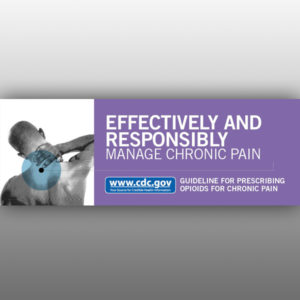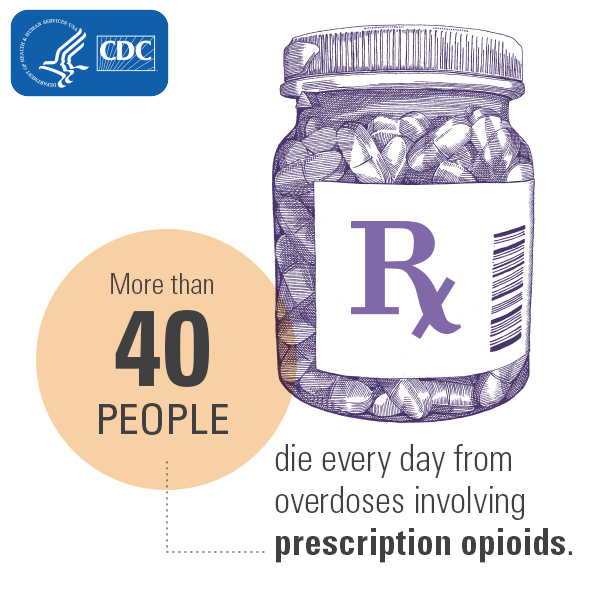In his best-selling Hillbilly Elegy, author J.D. Vance opens a window into the widening opioid crisis churning across America. “Drugs have come in,” his second cousin, Rick, says when Vance drops by for a visit in Jackson, Kentucky. “And nobody’s interested in holding down a job.”
A top expert on the U.S. labor force, Alan B. Krueger, has written a new analysis studded with insights that closely link the two national challenges suggested by cousin Rick – soaring opioid* use and declining numbers of working-age men and women with jobs.
An estimated 3.8 million Americans use opioid medications for nonmedical reasons every month, according to a 2015 National Survey on Drug Use and Health cited by The New York Times. Last month, a White House panel last month called out the crisis as “a national public health emergency.”
The study by Krueger, a Princeton University professor who chaired the Council of Economic Advisers in the second Obama administration, is a stark reminder that even in resource-rich nations, errant medical ideas can become a curse for millions … a cure worse than the disease.
One indisputable part of the opioid problem is the staggering pace physicians have prescribed painkillers since the turn of the century. Krueger cites the following among other disturbing facts gathered by the U.S. Centers from Disease Control and Prevention (CDC) and others:
- Nearly half of all Medicare recipients under the age of 65 were prescribed opioid medication in 2011.
- Sales of prescription opioid medication per capita increased by more than four times from 1999 to 2015.
- More than one in five individuals insured by Blue Cross and Blue Shield received an opioid prescription in 2015.
If we could point to substantial benefits to society from broader opioid use, the rapid spread of these pain killers in the general population might have been appropriate. But that is not what Dr. Tom Frieden, then director of the CDC, concluded last year. He and physician colleague, Dr. Debra Houry, described a fast-mounting crisis in unrestrained opioid prescriptions, a crisis stoked perhaps by design, inertia, or convenience by many physicians and drug companies.
“The use of opioids for chronic pain may actually worsen pain and functioning,” Dr. Frieden and Dr. Houry wrote in an article for the New England Journal of Medicine. Their article detailed several steps physicians should follow before prescribing opioids.

In 2015, more than 33,000 Americans died from an opioid overdose, up from more than 19,000 in 2014. The 2015 total was more than twice as many who were murdered that year in homicides, and more than four times the total in 1999.
The Institute of Medicine estimated in 2011 that more than 100 million Americans suffer from chronic pain. This means, as The New York Times’ Jane Brody wrote on September 4, “there is a vast market available for people ‘legitimately’ prescribed an opioid to become hooked on ever-larger doses of these drugs.”
She added that more doctors are cautioning that popular over-the-counter medicines, such as ibuprofen and other nonsteroidal anti-inflammatory drugs (NSAIDs) also are frequently abused.
In his new analysis, published September 7 by the Brookings Institution, Alan Krueger calculates that the increase in opioid prescriptions between 1999 and 2015 could account for about 20 percent of the observed decline in the proportion of people employed or looking for work in the U.S., and 25 percent of the observed decline for women.
The so-called labor force participation rate has been falling since the early 2000s. In 2015, it reached a near 40-year low, at 62.4 percent. Italy was the only industrialized country with a lower rate of labor force participation for men aged 25 to 54.
Krueger shows that U.S. states posting a decline in labor force participation rates also were home to counties with higher rates of opioid prescription. Other social and economic factors, such as the decline of marriage and loss of local manufacturing jobs, likely contributed to the decline. Even so, he adds, “the opioid crisis and depressed labor force participation are now intertwined in many parts of the U.S.”
Finding a solution to the crisis should be a “national priority,” Krueger writes. One possible answer, he says, is extending health insurance coverage and preventative care under the Affordable Care Act to many men in prime working ages who are out of the workforce.
Krueger says better health care advice on how to manage their medications “could potentially be helpful,” especially for nearly half of the men in this group who are not in the labor force. They take pain medication daily, according to Krueger’s surveys, and most reported that pain levels were too high to find and keep a job.
Finally, one more tragic statistic … a blistering indictment of an out-of-control prescription process. Again, cited by former CDC director Dr. Tom Frieden (who stepped down early this year) and colleague Dr. Debra Houry:
- An estimated one of every 550 patients who started opioid therapy died from an opioid-related cause; the typical (median) fatality occurred within 2.6 years after the medications were first prescribed.
As J.D. Vance warns in Hillbilly Elegy, this much is clear: “An epidemic of prescription drug addiction has taken root.”
*Opioids include prescription painkillers, such as oxycodone and fentanyl, and illegal drugs such as heroin.
** **
The Financial Times published on September 20 an excellent analysis of how health insurance guidelines contribute to the crisis
See also this Bloomberg News report on the Krueger analysis, and this Sheelah Kolhatkar/New Yorker column in September 18th issue
Learn more in this Reuters report about record level of U.S. job openings, above six million in July 2017
Graphics courtesy of the U.S. Centers for Disease Control and Prevention


Leave a Reply